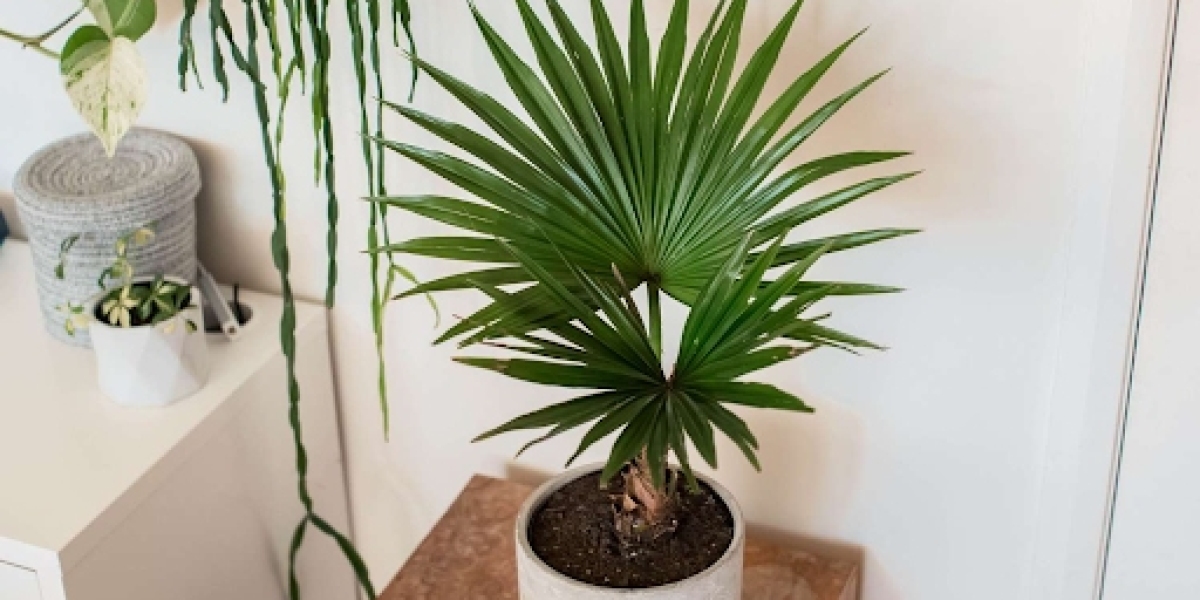The palms plant, scientifically classified under the family Arecaceae, is renowned for its captivating presence and diverse array of species. Characterized by their striking long leaves and distinct trunk structures, palms are widely cherished for their ornamental and tropical appeal. With a rich history tracing back to ancient civilizations, these plants have played vital roles in cultural practices, providing materials for construction, food, and various other uses. Their adaptability to different climates and landscapes has made them a popular choice for both indoor and outdoor cultivation, adding a touch of elegance and tranquility to any environment.
Benefits of Palms Plant
Palms plants offer an array of benefits that extend beyond their aesthetic appeal. From environmental advantages to cultural significance, these versatile plants contribute to various aspects of our lives and ecosystems.
1. Air Purification: Palms are exceptional air purifiers, effectively removing toxins such as formaldehyde, benzene, and ammonia from indoor environments. Through a process known as phytoremediation, they absorb and break down pollutants, enhancing the overall air quality and promoting a healthier atmosphere for occupants.
2. Humidity Regulation: Many palm species naturally release moisture into the air through a process called transpiration. This natural humidification helps maintain optimal humidity levels indoors, which can be particularly beneficial in arid or dry climates. Proper humidity levels contribute to respiratory health, skin hydration, and the prevention of various health issues.
3. Carbon Sequestration: Palms contribute to carbon sequestration, acting as important carbon sinks that help mitigate the effects of climate change. By absorbing carbon dioxide during photosynthesis and storing it within their biomass, palms play a role in reducing greenhouse gas concentrations in the atmosphere.
4. Erosion Control: Palms' extensive root systems help prevent soil erosion by stabilizing the soil and preventing it from washing away during heavy rains or windstorms. This is particularly valuable in coastal areas where erosion can lead to habitat loss and property damage.
5. Biodiversity Support: Palms provide essential habitats and resources for a variety of wildlife. Birds, insects, and small mammals often rely on palms for food, shelter, and nesting sites. In turn, this promotes biodiversity and contributes to the overall health of ecosystems.
6. Cultural Significance: Palms hold cultural and symbolic significance in many societies. They have been used in traditional ceremonies, religious rituals, and celebrations for centuries. Palms often symbolize peace, victory, and endurance, adding a layer of cultural richness to their presence.
7. Economic Benefits: Palms and Dracaena have economic value through various avenues. They are cultivated for their ornamental appeal, contributing to the landscaping and gardening industries. Palms like coconut palms also yield valuable products such as coconut oil, coconut water, and palm sugar. In some regions, palm fronds are used for weaving baskets, mats, and other handicrafts.
8. Aesthetic Enhancement: Palms are renowned for their beauty and elegance, instantly elevating the visual appeal of any space. Whether used as focal points in gardens, as indoor potted plants or as street trees in urban areas, palms lend a tropical and serene ambiance that enhances the overall aesthetics of their surroundings.
9. Low Maintenance: Many palm species are relatively low-maintenance, requiring minimal care once established. They are adaptable to a range of soil types and climates, making them suitable for various landscapes and gardening preferences. Their resilience and hardiness make them an attractive option for both novice and experienced gardeners.
10. Tourism and Recreation: Palms contribute to the tourism industry by attracting visitors to landscapes renowned for their natural beauty. Coastal areas adorned with swaying palms, for instance, are often sought-after destinations for relaxation and recreation, boosting local economies.
Final words
Palms plants offer a multitude of benefits that extend beyond their visual allure. From their role in improving air quality and humidity levels to their contributions to carbon sequestration and erosion control, palms play an integral part in promoting environmental health and well-being.








